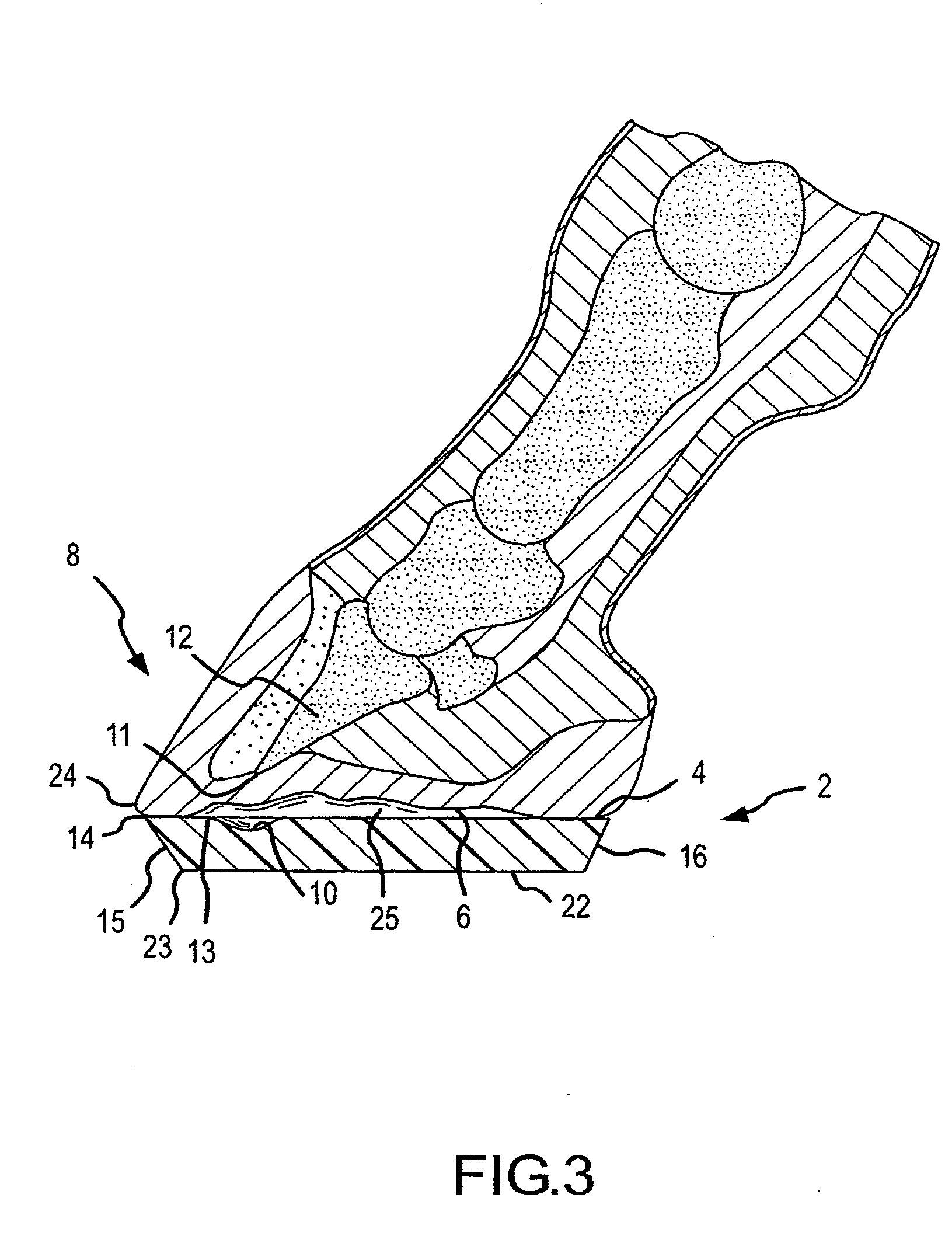Equine hoof pad for break over modification
- Summary
- Abstract
- Description
- Claims
- Application Information
AI Technical Summary
Benefits of technology
Problems solved by technology
Method used
Image
Examples
Embodiment Construction
[0030]FIGS. 1a-1c respectively illustrate in diagrammatic form three typical states or phases of equine laminitis, mild, moderate and severe. In each case the coffin bone 12 of the horse's hoof 8 has prolapsed out of its normal position as a result of the partial or complete failure of the interdigitated laminae 9. As earlier stated, laminitis is it not the only pathology treatable with the apparatus and method of the present invention, however the accompanying drawings and this description will focus on laminitis to best explain the present invention.
[0031] The primary pad 2 of the present invention is shown in FIG. 2. The pad comprises a block of rigid material having a flat upper surface 4 intended for mounting against the bottom ground-contacting surface 6 of the horse's hoof 8, as seen in FIG. 3. The forward portion of the flat upper surface 4 is relieved to form a trough 10 that is crescent shaped, similar to the peripheral distal border 11 of the coffin bone 12, and having a...
PUM
 Login to View More
Login to View More Abstract
Description
Claims
Application Information
 Login to View More
Login to View More - R&D
- Intellectual Property
- Life Sciences
- Materials
- Tech Scout
- Unparalleled Data Quality
- Higher Quality Content
- 60% Fewer Hallucinations
Browse by: Latest US Patents, China's latest patents, Technical Efficacy Thesaurus, Application Domain, Technology Topic, Popular Technical Reports.
© 2025 PatSnap. All rights reserved.Legal|Privacy policy|Modern Slavery Act Transparency Statement|Sitemap|About US| Contact US: help@patsnap.com



